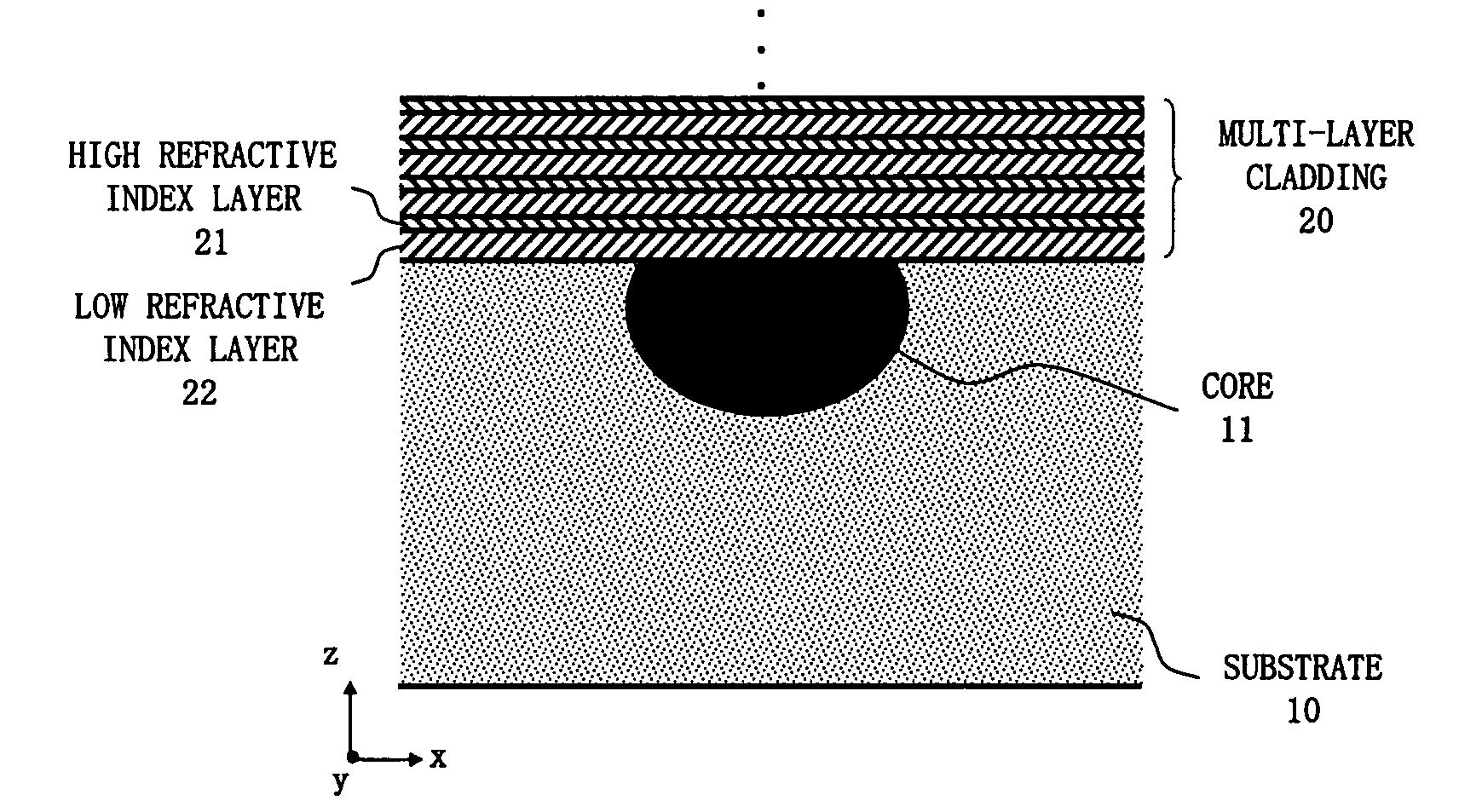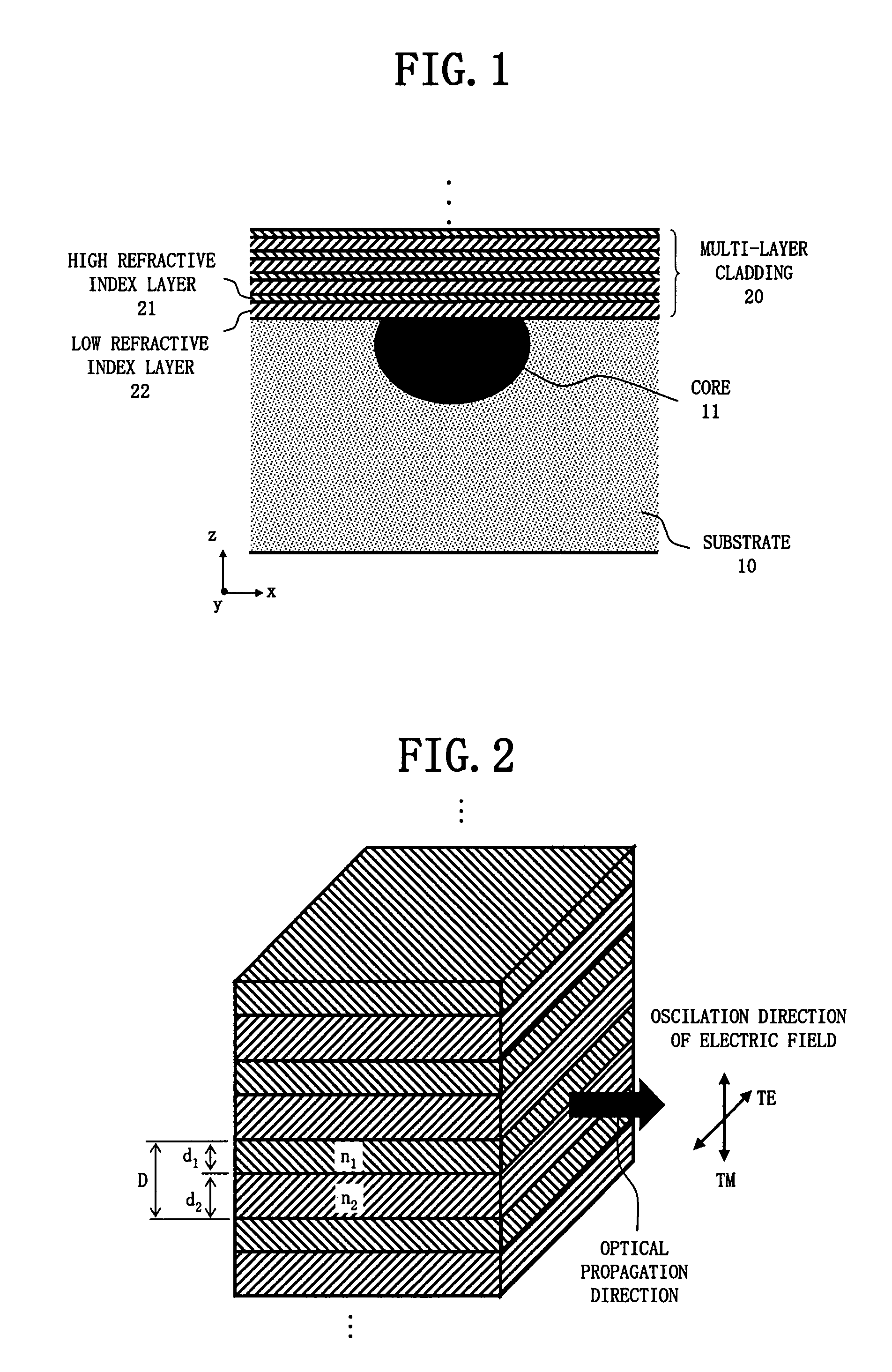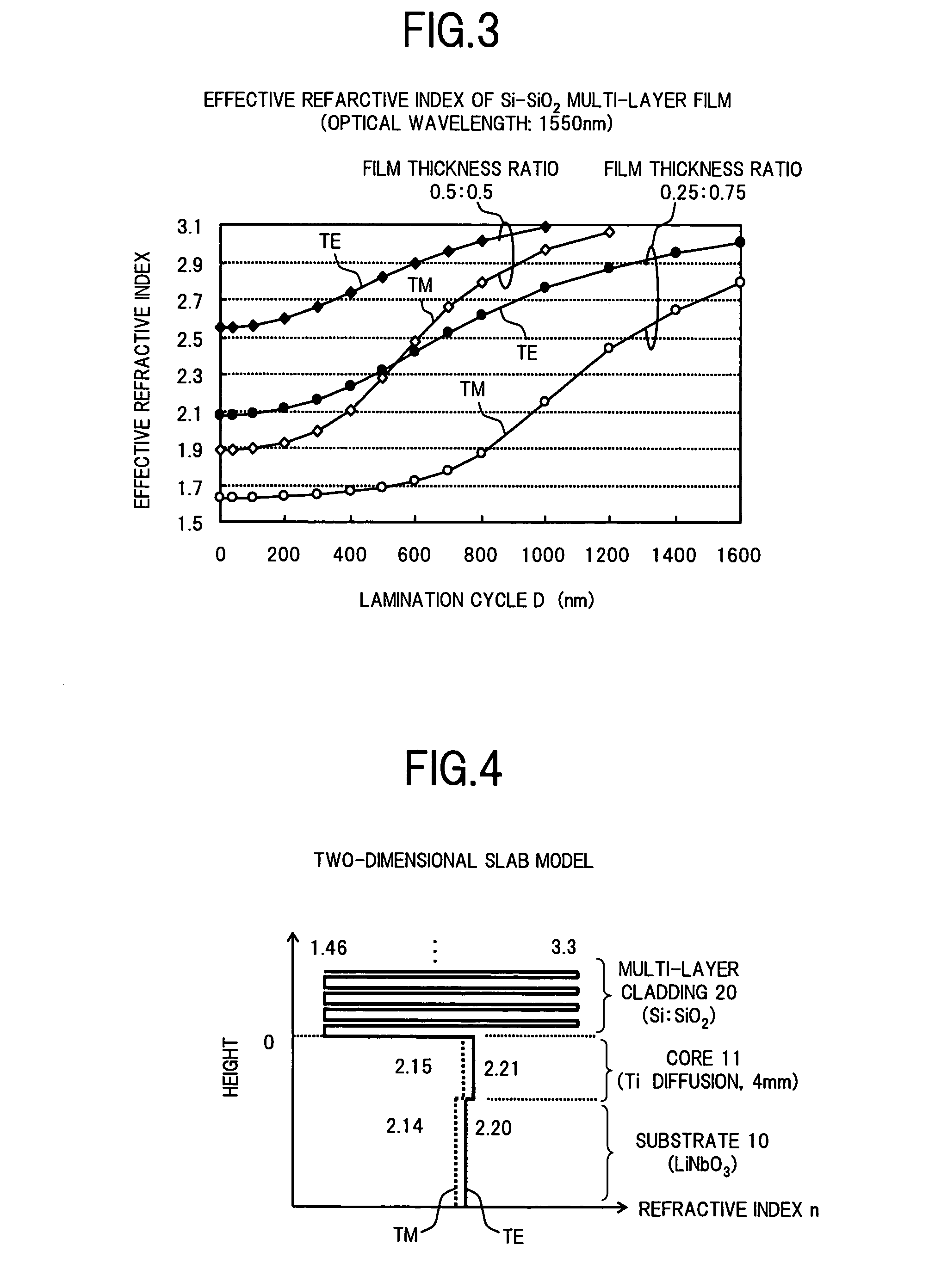Optical waveguide device and optical modulator
a technology of optical modulator and optical waveguide, which is applied in the direction of optical waveguide light guide, instruments, optics, etc., can solve the problems of loss degradation, enlargement of the entire optical modulator, deterioration of the polarization-extinction ratio of output signals, etc., and achieves simple optical waveguide structure and high polarization-extinction ratio
- Summary
- Abstract
- Description
- Claims
- Application Information
AI Technical Summary
Benefits of technology
Problems solved by technology
Method used
Image
Examples
first embodiment
[0102]FIG. 20 is a cross section view showing a configuration of the optical waveguide device according to the present invention.
[0103]In the first embodiment, a waveguide type polarizer is realized such that the core 11 is formed on the LiNbO3 substrate 10 of z-cut by the Ti diffusion, and the high refractive index layer 21 using Si and the low refractive index layer 22 using SiO2 are laminated on the core 11 in the possession rates f1:f2=0.25:0.75 and the lamination cycle D=200 nm (namely, the Si layer film thickness d1=50 nm and the SiO2 layer film thickness d2=150 nm) with the SiO2 layer as the lowermost layer.
second embodiment
[0104]FIG. 21 is a cross section view showing a configuration of the optical waveguide device according to the present invention.
[0105]The second embodiment is an application example of the configuration of the first embodiment, in which there is disposed a multi-layer cladding 20′ formed by making only the lowermost layer (SiO2 layer) 22′ film thickness of the multi-layer cladding 20 to be different from the film thickness of each of the remaining SiO2 layers (ideally, ½). By differentiating the film thickness of a connecting portion of the multi-layer cladding to the core, as shown in a simulation result of the leakage amount of the light shown in FIG. 22, an effect that the leakage amount of the TE mode out to the multi-layer cladding is increased, can be achieved. This is because, if the film thickness of the connecting portion is changed, the solution (electromagnetic field distribution profile) satisfying a boundary condition (tangential components between the electric field a...
third embodiment
[0106]FIG. 23 is a cross section view showing a configuration of the optical waveguide device according to the present invention.
[0107]The third embodiment is a modified example of the configuration of the first embodiment shown in FIG. 20, in which there is disposed a multi-layer cladding 20″ formed by terminating the total film thickness of the multi-layer cladding 20 at 600 nm (namely, three cycles), and a metal layer 30 is formed on the multi-layer cladding 20″. A propagation loss to the respective TE and TM polarization modes in the configuration of this third embodiment can be calculated, by utilizing an experiment result for the case where the cladding is the SiO2 single-layer film (similarly to the multi-layer cladding 20″, the film thickness of the single-layer cladding is 600 nm and the propagation loss to the TE and TM modes is about 0.1 dB / cm) and by considering that the propagation loss is in proportion to the leakage amount of the light. One example of calculation resu...
PUM
 Login to View More
Login to View More Abstract
Description
Claims
Application Information
 Login to View More
Login to View More - R&D
- Intellectual Property
- Life Sciences
- Materials
- Tech Scout
- Unparalleled Data Quality
- Higher Quality Content
- 60% Fewer Hallucinations
Browse by: Latest US Patents, China's latest patents, Technical Efficacy Thesaurus, Application Domain, Technology Topic, Popular Technical Reports.
© 2025 PatSnap. All rights reserved.Legal|Privacy policy|Modern Slavery Act Transparency Statement|Sitemap|About US| Contact US: help@patsnap.com



